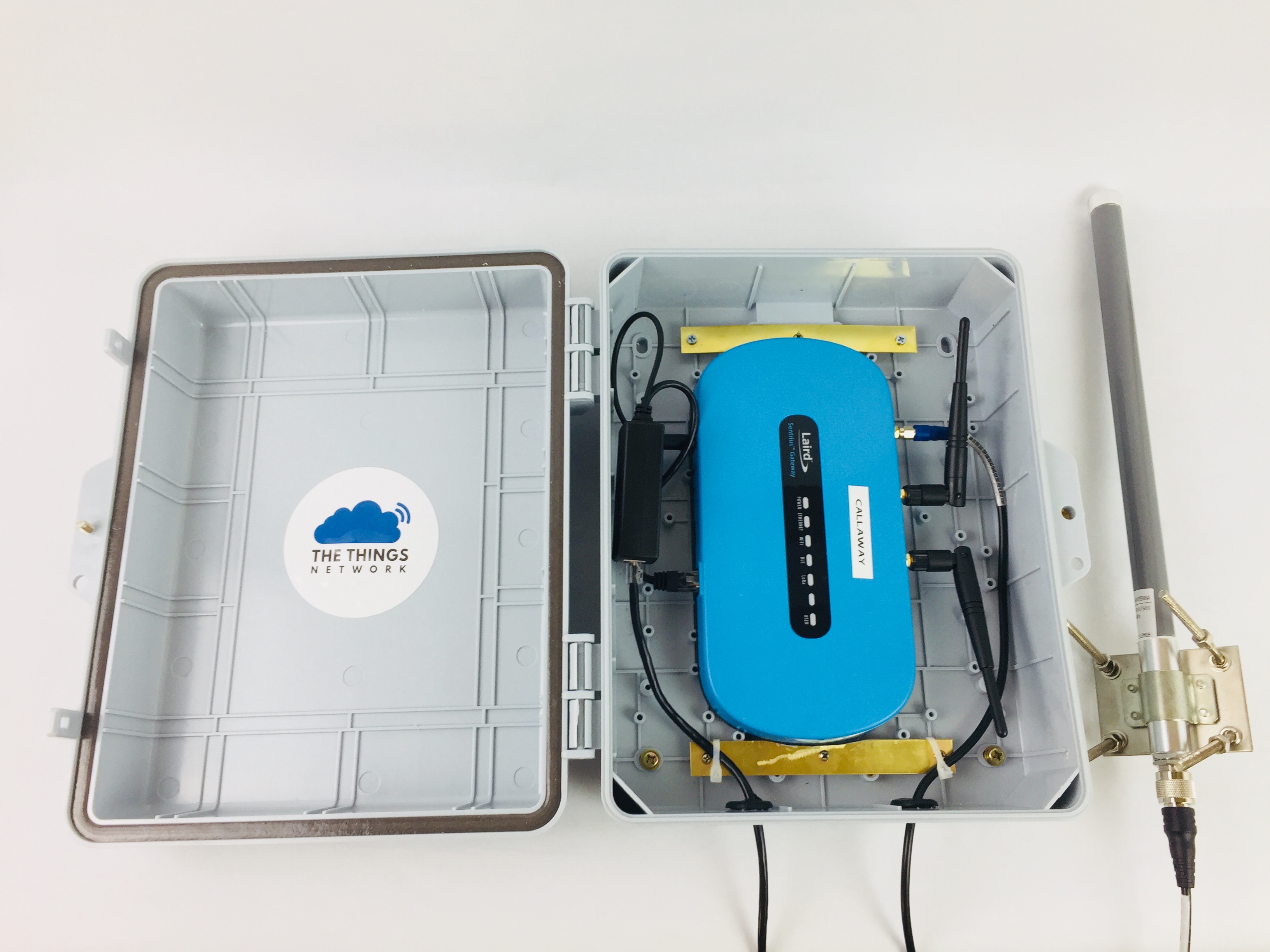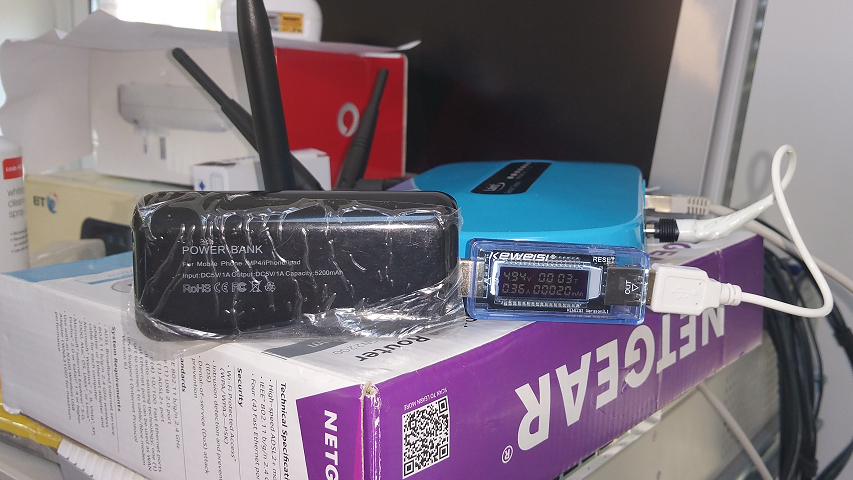For the TTN packet forwarder this is nog required because that file is not used. The TTN forwarder downloads the required configuration from the back-end.
@jmarcelino or @DPI-OAI can you have a go at this when you get the chance - I would like this cheaper alternative as well working in Australia
cheers
Paul
@Paul_Stewart it might be hard to imagine, however I do own a RG186 and configured it for TTN with the TTN forwarder, so I have tested the mechanism and can confirm Lairds statement.
Thanks for the notice of an update.
It seems to be working now. I updated the firmware, configured the gateway as per the TTN settings, and I have data flowing from a sensor. I’ll keep testing, but so far so good.
Some more details …
Firmware: Laird Linux gatwick-laird-93.7.2.9
LoRa settings:
- ignore presets
- forwarder = TTN Forwarder, gateway id as per TTN
The status then says:
- Gateway Connected = true
- Gateway ID =
- Region Code = US
- mode = ttn
Seems to be working on AU915 frequencies. I haven’t tried AS923 configs.
A couple of additional things that may help those struggling to set up a RG191:
-You must update the firmware. If you are struggling to update the firmware, do a factory reset. I had to perform 3 factory resets before the firmware updates worked as per the user manual.
-as @DPI-OAI indicates you need the gateway id as per TTN, you also need to include the gateway key as per TTN
Great to finally have a choice of cheaper gateways in Australia!
I can confirm Laird RG191 runs for AU915 region.
Using the latest version.
The “Radios” graphical interface is limited to 903-915MHz, don’t use it.
Save current LoRa configuration in a json file.
Edit the json file, change this:
"radio_0": {
"freq": 917200000
},
"radio_1": {
"freq": 917900000
},
Upload a saved LoRa configuration json filList iteme and restore it.
Hi everyone been getting very interested in their affordable pricing Gateway but well I try searching people’s expected range and testing results and unfortunately I can’t find one.
Anyone with this kind gateway by Laird would help us all by sharing your reach of LoRa Range test or will be great if you have a comparison to another gateway. Will be nice if we could also show the SNR, RSSI, SF, Frequency
Much thanks. Great day !
Can confirm @Phil_Wilko 's comments about firmware update and factory default setting. All that said, a new Laird gateway was installed and activated at a Temecula (California) winery today.

@manoj15 To my experience there is not much difference between gateways wrt range. I have tried MultiTech, TTN, Laird, and Gemtek. All have approx. the same range and signal strengths when using an identical antenna and location. Influencers are: height/line-of-sight, outside or inside antenna (estim 10dB difference), and lastly antenna gain.
@Vinduino, Reinier your photo has just the IP67 compliant case I am after! Is that the official Laird one? Unfortunately I bought mine through Mouser and they didn’t stock the Laird case. Your antenna looks somewhat better that the original one!! What range do you see across your wineries?
Also thanks for a great talk at TheThingsConference in Amsterdam earlier this year. I have been inspired to develop some things for wineries down here in Western Australia.
@Phil_Wilko Phil, this is a standard box purchased on Amazon. Link: http://a.co/0AjbGWa
Altelix 14x11x5 Pole Mount Polycarbonate + ABS Weatherproof NEMA Box Outdoor Equipment Enclosure. The two copper mounting strips are not part of the standard enclosure.
@Vinduino do you have any figures on the power draw of the RG191?
I’m looking to roll out some gateways at solar powered sites so every watt is critical if you want to ensure 24/7 unattended operation.
As an example, one of my existing sites has 660w of solar panels and 12.5kWh of battery capacity to support a 26 watt continuous load. You can imagine the scale of changes required to reliably support 5 watts of extra load.
@jbkiwi Interesting project. Please keep the forum updated on your solar powered gateway.
Have not measured RG191 power draw. The std wall adapter is 12V 2A. I have used PoE adapters rated 12V 1A with RG191 without issue.
@jbkiwi @Vinduino Like you I am looking at some ‘off-grid’ sites where I will have solar back-up and also at some sites running on passive/low voltage (vs 24/48V) POE enabled GW’s - I’m running RG186’s in UK/EMEA so hopefully not too much difference with your 191’s.
When I checked with the dev team at Laird I was advised 12v quickly dropped on motherboard and therefore should be good for 6V to 18V range at adapter input , later amended down to 15Vmax due to presence of a fuse on board (should help with limiting regulation and supply losses from solar panel and associated back-up battery). No ‘guarantees’ but if supply not too noisy potential for operation down to <=5V - 4.5V poss but YMMV.
As a test I have run a couple of sample gateways (in benign environments not testing over temp/in the field) from a 5V supply and also from 5V USB power-bank with no issues over many hours…GW was not heavily loaded and was only handling packets from 5 or 6 nodes - so again overall performance may vary if handling 100’s/1000’s of nodes,generating high load and lots of network traffic 
Using a simple USB power monitor I was able to test rough order of average current consumption - wasn’t monitoring peaks - and typically saw operation at around 350-400mA…see sample pic attached 

During GW startup measured voltage was 5.01 - 5.06V. Actual voltage measured during steady state op was ~4.97V not the 4.94V indicated on display!
Good luck…keep us posted on what you see. I will be running more tests later next month with 4 or 5 new GW’s and will update here also…
@Jeff-UK That is pretty cool info Jeff!! Thanks for sharing.
Having visions of mountain top solar powered gateways now 
Your welcome!..and that’s one of my use cases 
@Phil_Wilko Coming back on your earlier question. We get up to 10 miles range with omni directional 6 dBi antennas, mounted on roofs, This is hilly country, nodes can connect as long as there is line of sight.
I’m been testing some of these units for a while and now in the process of deploying them to their final locations.
I’m having trouble setting up the static LAN settings - up until now they’ve all just used DHCP.
The LAN is a /26, so subnet mask is 255.255.255.192
I’m trying to set the following values…
Device IP Address x.y.z.7
External Gateway IP x.y.z.1
Device Subnet Mask 255.255.255.192
Broadcast IP x.y.z.63
But it keeps overriding the Broadcast IP to 192.168.3.255 - The LAN /26 I’m trying to use isn’t even in the 192.168.0.0/16 subnet.
Should I just be ignoring it? It seems to be working anyway
